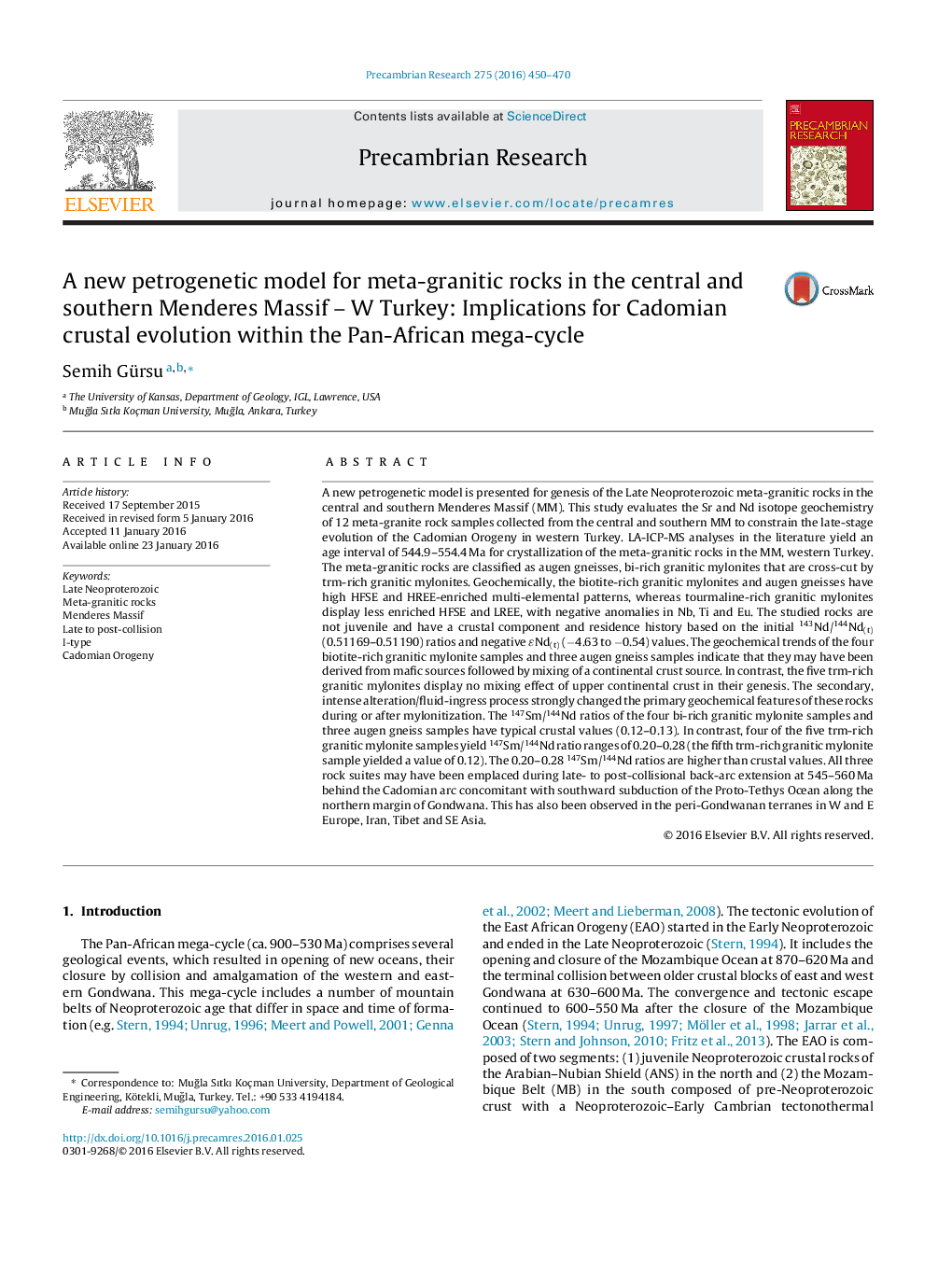| کد مقاله | کد نشریه | سال انتشار | مقاله انگلیسی | نسخه تمام متن |
|---|---|---|---|---|
| 4722385 | 1639600 | 2016 | 21 صفحه PDF | دانلود رایگان |

• The geochemistry, Sr and Nd isotope analyses of the Late Neoproterozoic meta-granitic rocks in the Menderes Massif have been presented for the first time.
• The petrogenetic and tectonomagmatic evolution of Late Neoproterozoic magmatism in favor of a Cadomian arc development in NW Gondwana margin.
• A new scenario for the geodynamic evolution of the W Anatolian continental crust within the framework of the Cadomian basements of the Pan-African mega-cycle.
A new petrogenetic model is presented for genesis of the Late Neoproterozoic meta-granitic rocks in the central and southern Menderes Massif (MM). This study evaluates the Sr and Nd isotope geochemistry of 12 meta-granite rock samples collected from the central and southern MM to constrain the late-stage evolution of the Cadomian Orogeny in western Turkey. LA-ICP-MS analyses in the literature yield an age interval of 544.9–554.4 Ma for crystallization of the meta-granitic rocks in the MM, western Turkey. The meta-granitic rocks are classified as augen gneisses, bi-rich granitic mylonites that are cross-cut by trm-rich granitic mylonites. Geochemically, the biotite-rich granitic mylonites and augen gneisses have high HFSE and HREE-enriched multi-elemental patterns, whereas tourmaline-rich granitic mylonites display less enriched HFSE and LREE, with negative anomalies in Nb, Ti and Eu. The studied rocks are not juvenile and have a crustal component and residence history based on the initial 143Nd/144Nd(t) (0.51169–0.51190) ratios and negative ɛNd(t) (−4.63 to −0.54) values. The geochemical trends of the four biotite-rich granitic mylonite samples and three augen gneiss samples indicate that they may have been derived from mafic sources followed by mixing of a continental crust source. In contrast, the five trm-rich granitic mylonites display no mixing effect of upper continental crust in their genesis. The secondary, intense alteration/fluid-ingress process strongly changed the primary geochemical features of these rocks during or after mylonitization. The 147Sm/144Nd ratios of the four bi-rich granitic mylonite samples and three augen gneiss samples have typical crustal values (0.12–0.13). In contrast, four of the five trm-rich granitic mylonite samples yield 147Sm/144Nd ratio ranges of 0.20–0.28 (the fifth trm-rich granitic mylonite sample yielded a value of 0.12). The 0.20–0.28 147Sm/144Nd ratios are higher than crustal values. All three rock suites may have been emplaced during late- to post-collisional back-arc extension at 545–560 Ma behind the Cadomian arc concomitant with southward subduction of the Proto-Tethys Ocean along the northern margin of Gondwana. This has also been observed in the peri-Gondwanan terranes in W and E Europe, Iran, Tibet and SE Asia.
Figure optionsDownload as PowerPoint slide
Journal: Precambrian Research - Volume 275, April 2016, Pages 450–470